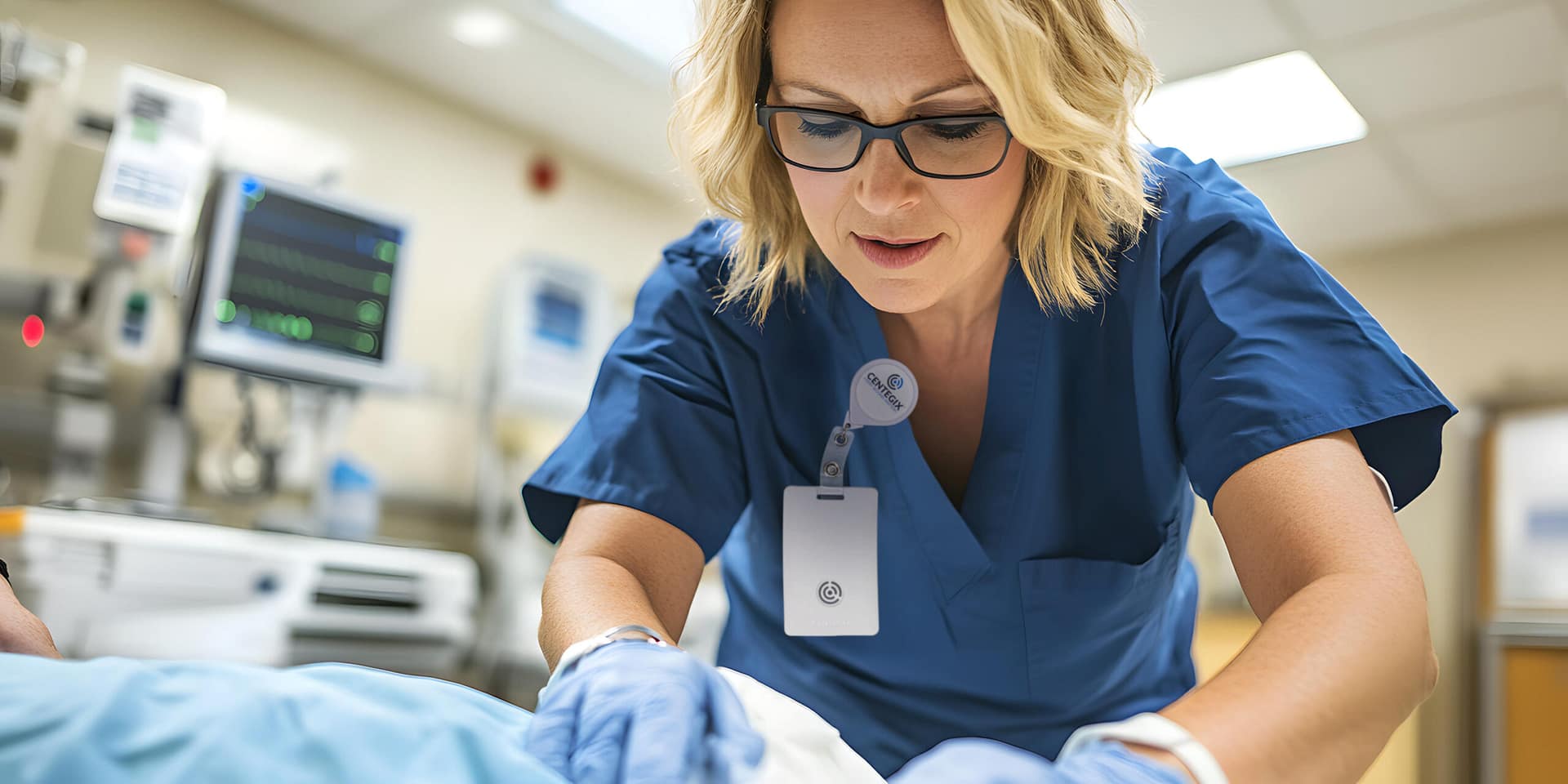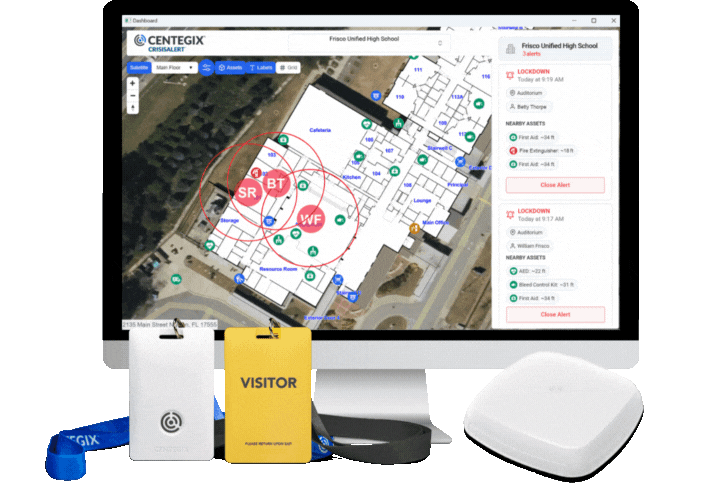In today’s environment, the risk of violence in healthcare is an ever-present concern. From aggressive patients and visitors to large-scale safety threats, healthcare professionals are expected to navigate high-stress, sometimes dangerous, environments while maintaining compassion, calm demeanors, and clinical accuracy. But when safety isn’t guaranteed, the consequences are profound—impacting not only caregiver well-being but also patient outcomes.
In the effort to curb violence in healthcare, many hospitals have turned to Real-Time Location Systems (RTLS) to enhance staff protection. Initially designed for tracking medical equipment and other high-value assets, these systems have more recently been outfitted with panic buttons and are increasingly being used to track the movements of healthcare workers. While this repurposing may seem like a logical next step, it has opened the door to privacy concerns, trust issues, and mixed adoption from frontline staff.
Constant Tracking vs. Empowered Protection
RTLS technologies were introduced to monitor the real-time location of assets in a hospital or healthcare facility. Now, these solutions are being adopted to monitor healthcare workers throughout their shift in the name of “safety”. While this allows hospitals to locate an employee during an emergency, it also means the employee is continuously tracked, even when no threat is present. This type of surveillance can feel invasive, eroding trust between leadership and staff. In an industry already stretched thin by workforce shortages and burnout, safety solutions mustn’t be perceived as tools of control.
In contrast, wearable duress buttons that leverage user-activated locating capabilities are gaining momentum for their ability to strengthen safety without compromising privacy or crossing personal boundaries.
The Problem with RTLS as a Safety Solution in Healthcare
The rise of violence in healthcare settings has forced leaders to make fast decisions about how to protect their workforce. According to the Bureau of Labor Statistics, healthcare workers account for nearly 48% of all nonfatal injuries from workplace violence despite only representing about 10% of the U.S. workforce. In a recent survey, 91% of physicians said that they or a colleague were a victim of workplace violence within the past year. These alarming statistics are prompting healthcare organizations to act quickly—and while it may be ideal to expand the use of a technology already in use, it’s not necessarily the best path forward.
RTLS solutions were not designed to address human safety; they were designed to track equipment. Repurposing these systems introduces several unintended consequences:
- Privacy concerns: Staff may feel surveilled, which can create a culture of distrust.
- Low adoption: If caregivers don’t trust the system, they may avoid wearing the device, reducing its effectiveness.
- Lack of effectiveness: tools that aren’t designed to address workplace safety will have shortcomings when applied to another purpose.
- Misalignment with intent: RTLS systems don’t prioritize instant response or ease of use during high-stress situations.
Clinicians and industry experts echo these concerns: “Healthcare organizations must strike a balance between ensuring staff safety and respecting privacy,” says Andrea Greco, Senior Vice President of Healthcare Safety for CENTEGIX. “When employees feel empowered and protected—not monitored—they are more likely to adopt safety protocols.”
A Better Way: Intentionally Designed Safety Technology
In contrast to evolving RTLS technologies, safety platforms like CENTEGIX’s CrisisAlert™ prioritize safety and privacy. While this wearable duress button also offers locating abilities, CrisisAlert is not an RTLS system in the traditional sense. Designed specifically for safety, healthcare providers can wear their discreet CrisisAlert badge throughout their shift, which remains dormant until activated. When the user feels unsafe or needs support, they press a button on their badge—only then will their location be shared with the appropriate responders on campus. This enables staff to summon help immediately, while eliminating privacy concerns.
CENTEGIX has redefined how safety technology functions in healthcare by removing the need for constant tracking. This approach does more than protect physical safety; it protects psychological safety. Staff don’t feel as if they’re being watched, but they know help is available the moment they need it. It also eliminates the concern that a staff member’s location data could be accessed or misused outside of an emergency, strengthening trust and adoption.
Safety Without Sacrificing Trust
The future of workplace violence prevention in healthcare lies at the intersection of safety and privacy. When solutions are designed to protect rather than control, organizations gain the trust of their employees, and with trust comes adoption, engagement, and retention.
This is especially critical now, when the healthcare workforce struggles to maintain stability. A 2024 State of US Nursing Report found that 26% of nurses are considering leaving their roles due to workplace violence. These professionals want to feel safe, but they also want to feel respected. Imposing asset-tracking technology on healthcare professionals sends the wrong message.
Instead, hospitals must invest in technology that provides rapid response capabilities while honoring the dignity of the caregiver.
Final Thoughts: Lead with Empathy, Design for Safety
Protecting workers from violence in healthcare requires more than retrofitting existing tools. It demands a thoughtful, empathy-driven approach that understands the realities of frontline work. The goal is not just to respond faster to emergencies, but to create a culture where healthcare workers feel seen, supported, and secure.
RTLS can play a role in hospital operations, but when it comes to human safety, more intentional solutions are required. CENTEGIX CrisisAlert provides that balance—real-time response without real-time surveillance. In the fight against violence in healthcare, it’s critical to choose a solution that puts people first.
To learn more about how CENTEGIX can help you transform safety in your healthcare organization, click here.










